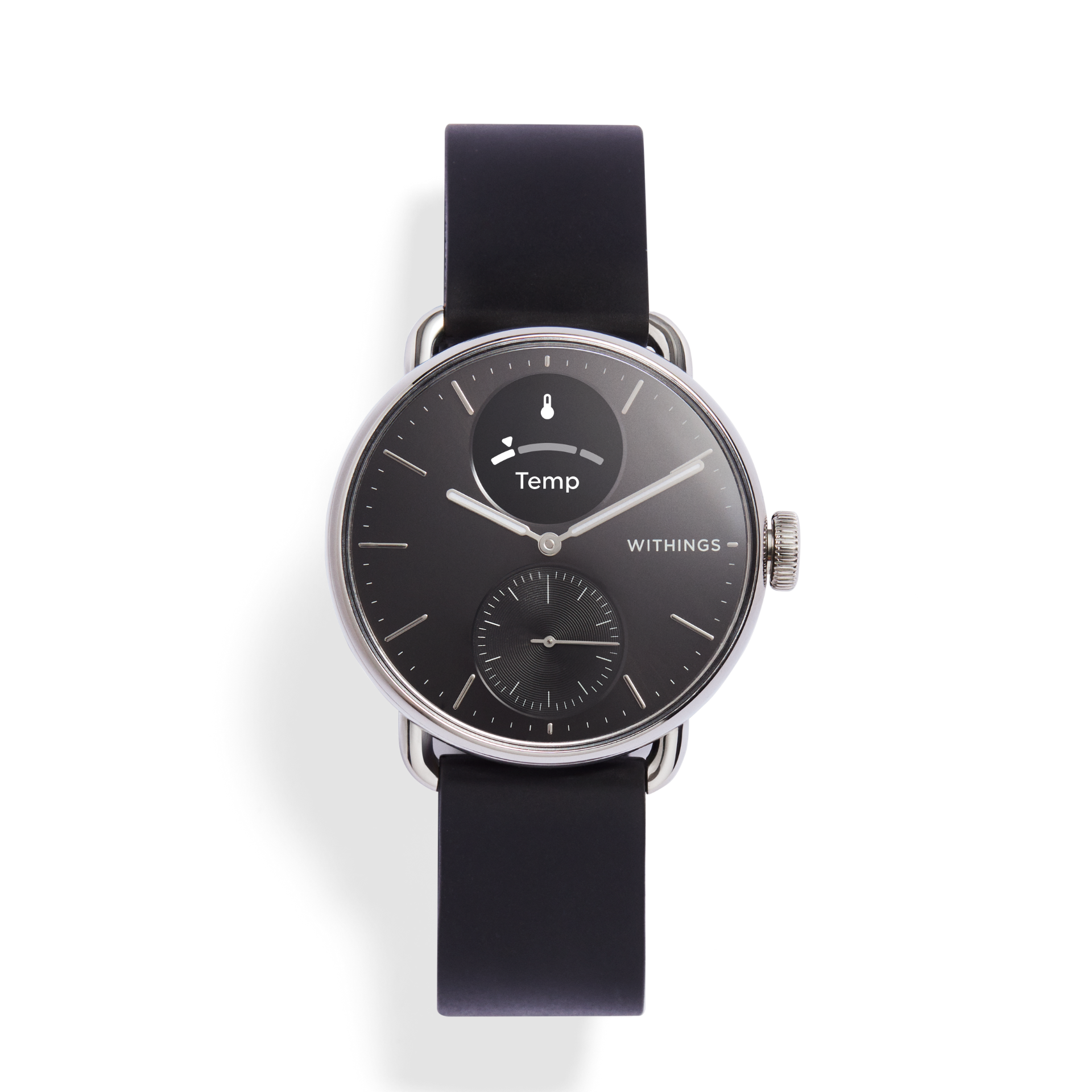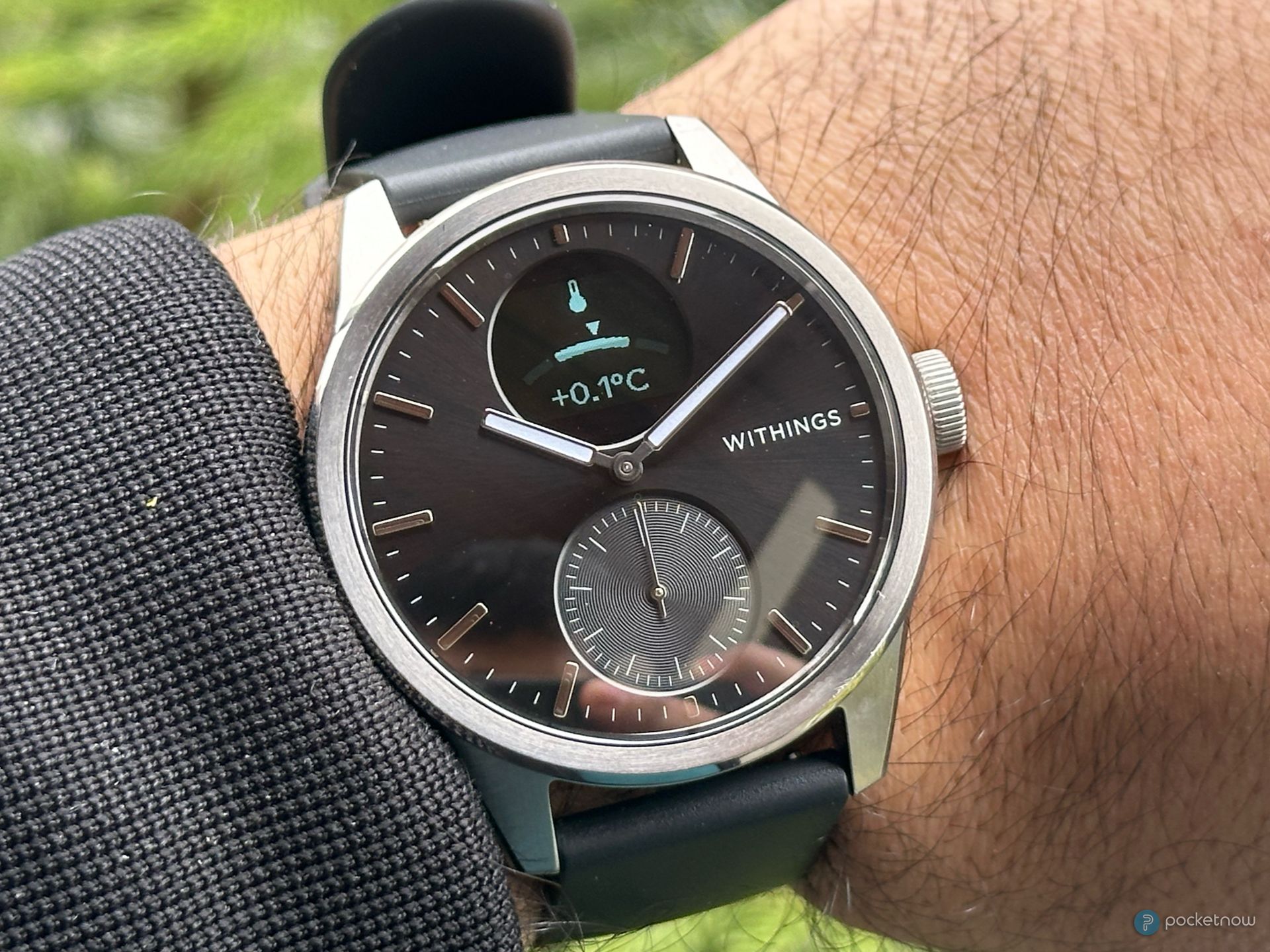[ad_1]
Withings may not be a household name like Samsung and Apple, but it’s making strides in the smart wearable market. The company showcased its upgraded ScanWatch 2 back in September, winning our Best of IFA 2023 award, but at the time, I only had a brief 15-minute hands-on time with the smartwatch. However, I now have the device and have been using the ScanWatch 2 for the past few weeks. Over time, I have realized that I prefer the Withings ScanWatch 2 over my Apple Watch. Here are five reasons why:
1 Retains the Classic Watch Aesthetics
Pocketnow / Sanuj Bhatia
One of the things I adore about the ScanWatch 2 is its design. It maintains a classic watch appearance with its circular shape and analogue-style hands. In contrast, the Apple Watch features a more square-ish design, which I’m not really a fan of. The ScanWatch 2 seamlessly combines the timeless watch look with a smart OLED screen. When you press the side button, the analog-style hands move to the 10:10 position, allowing you to interact with the OLED display. When the watch is idle, it still gives you that traditional watch vibe with the hands showing the time.
Additionally, the ScanWatch 2 boasts a sturdy construction. It features a stainless steel case and a stainless steel rotating crown with sapphire glass up front. The watch is rated 5ATM for water resistance, although there’s no official information about its dust resistance.
2 Body Temperature Sensor
Pocketnow / Sanuj Bhatia
Apple Watch gained temperature tracking with Series 8, but its functionality remains quite limited. The Withings ScanWatch 2, on the other hand, offers a more powerful 24/7 temperature tracking feature that continuously monitors your body temperature deviations from your baseline temperature.
This data helps the watch detect the early signs of illness before you’re even aware of them. On the ScanWatch 2, you can check your temperature variations from your body’s baseline at any given moment, unlike the Apple Watch, which primarily uses the temperature sensor for menstrual cycle tracking.
3 30-Day Battery life
Pocketnow / Sanuj Bhatia
One of the biggest annoyances I have with the Apple Watch is that I have to charge it every single night. It can’t even go through two days without being put on a charger, which can be quite annoying. There have been countless times I have gone to the gym and tried to start workout tracking, only to realize I forgot to pick up the Apple Watch from its charger. This isn’t the issue with Withings ScanWatch 2.
Withings claims up to 30-day battery life on the ScanWatch 2, and while I find that too ambitious, I found the smartwatch lasting just over 20 days on the first charge. Plus, it only takes two hours to recharge. So, after charging it overnight, you probably won’t have to worry about charging it for the next three weeks.
4 Same Health and Fitness Tracking Abilities
Pocketnow / Sanuj Bhatia
Apple Watch is a great device when it comes to health and fitness tracking, covering everything from blood oxygen levels to heart rate and workout monitoring. Thankfully, when I switched to the Withings ScanWatch 2, I didn’t have to compromise on these features as it offers a similar range of capabilities, including ECG tracking, heart rate monitoring, SPO2 tracking, sleep tracking, a body temperature sensor, and more than 40 workout options. The same set of health tracking features are available on both platforms.
5 Android and iOS Compatibility
Pocketnow / Sanuj Bhatia
Finally, a major reason I adore the ScanWatch 2 is its compatibility with both Android smartphones and iPhones. Being a tech reviewer, I frequently switch between devices, and with the Apple Watch, I’m stuck with my iPhone. But with the Withings ScanWatch 2, I’m not restricted to just the iPhone; it seamlessly works with Android smartphones, too. All its features, such as the 24/7 temperature sensor, ECG tracking, heart rate monitoring, and other health tracking functions, work equally well on both platforms.

Withings ScanWatch 2
The ScanWatch 2 the flagship wearable for Withings, offering upgraded sensors and new hardware that’s capable of tracking temperature over a 24-hour period, providing real-time metrics for activities that you perform throughout the day.
[ad_2]
Source link




